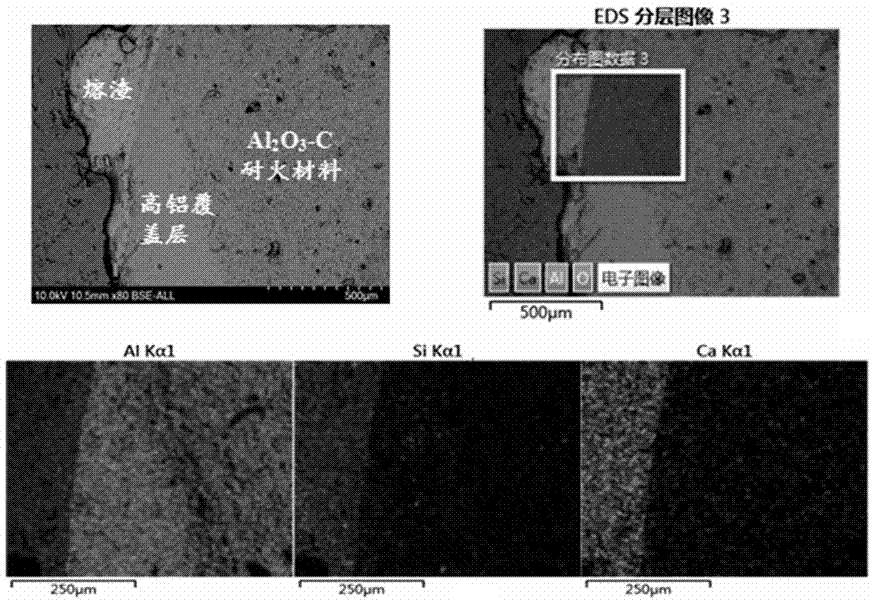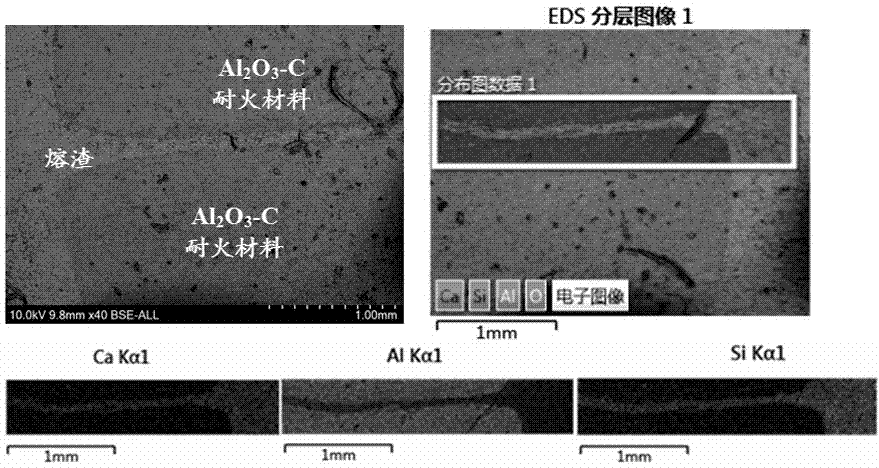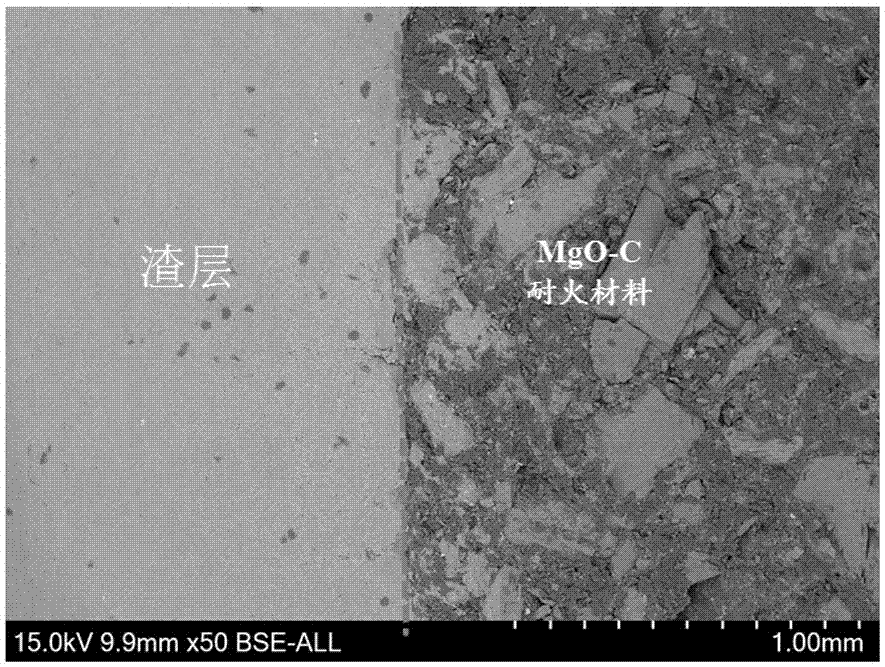Method for preventing carbon-containing fireproof material from slag erosion
An aluminum-carbon refractory material and a technology for refractory materials are applied in the field of metallurgical refractory materials to achieve the effects of reducing erosion, improving slag erosion resistance and increasing slag viscosity
- Summary
- Abstract
- Description
- Claims
- Application Information
AI Technical Summary
Problems solved by technology
Method used
Image
Examples
Embodiment 1
[0034] Prepare slag with an alkalinity of 0.8 according to the ingredients shown in Table 1, place the slag in a graphite crucible and heat it in a high-temperature resistance furnace to melt it. When the temperature reaches 1550°C, keep it for 20 minutes to homogenize the composition of the slag. Decarburized aluminum-carbon bricks fixed on molybdenum rods (φ10×25mm 2 ) as an anode connected to the positive pole of the DC power supply, and another molybdenum rod connected to the negative pole of the power supply to form a cathode (reversely connected to the DC power supply, that is, the molybdenum rod and the refractory material are respectively connected to the positive pole and negative pole of the DC power supply to form a system. anode and cathode, for comparison), the cathode molybdenum rod, the anode refractory sample is immersed in the slag for 5mm, the DC power supply is turned on, the tank voltage is adjusted to 3V, and the sample is taken out after 30 minutes of pow...
Embodiment 2
[0037] Prepare slag with an alkalinity of 0.8 according to the ingredients shown in Table 1, place the slag in a graphite crucible and heat it in a high-temperature resistance furnace to melt it. When the temperature reaches 1550°C, keep it for 20 minutes to homogenize the composition of the slag. Magnesia carbon bricks (φ10×25mm) will be fixed on molybdenum rods 2 ) is used as the cathode connected to the negative pole of the DC power supply, and another molybdenum rod is connected to the positive pole of the power supply to form the anode. The anode molybdenum rod and the cathode refractory material sample are immersed in the slag for 5mm, the DC power supply is turned on, and the tank voltage is adjusted to 4V. Take out the sample after 30 minutes of electrification, and observe the erosion condition on the surface of the two magnesium-carbon refractory materials.
[0038] Under the conditions of the present invention, the interface erosion of cathodically protected MgO—C ...
Embodiment 3
[0040] Prepare a slag sample with a basicity of 2.3 according to the ingredients shown in Table 1, place the mixed powder in a graphite crucible and heat and melt it in a high-temperature resistance furnace. When the temperature reaches 1650°C, keep it for 20 minutes to homogenize the composition of the slag. Connect the decarburized aluminum-carbon refractory material and molybdenum rod to the positive and negative electrodes of the DC power supply respectively, immerse the molybdenum rod and refractory material sample in the slag for 5mm, turn on the DC power supply, adjust the tank voltage to 2V, and take out the sample after 60 minutes of power on. Observe the erosion condition of the refractory surface.
[0041] After 60 minutes of treatment, the surface shape of the refractory material is relatively regular. Figure 4 shown. Using SEM and EDS to observe the cross-section of the aluminum-carbon refractory, it can be found that the thickness of the dense alumina coating ...
PUM
| Property | Measurement | Unit |
|---|---|---|
| electrical conductivity | aaaaa | aaaaa |
Abstract
Description
Claims
Application Information
 Login to View More
Login to View More - R&D
- Intellectual Property
- Life Sciences
- Materials
- Tech Scout
- Unparalleled Data Quality
- Higher Quality Content
- 60% Fewer Hallucinations
Browse by: Latest US Patents, China's latest patents, Technical Efficacy Thesaurus, Application Domain, Technology Topic, Popular Technical Reports.
© 2025 PatSnap. All rights reserved.Legal|Privacy policy|Modern Slavery Act Transparency Statement|Sitemap|About US| Contact US: help@patsnap.com



